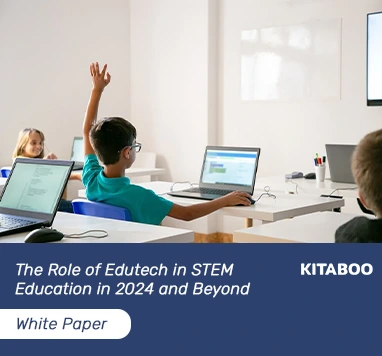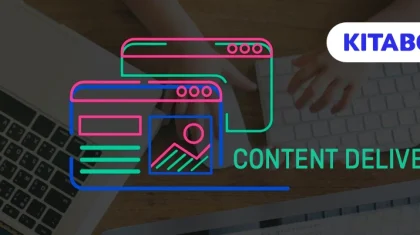
Why Print Textbooks Still Matter in Higher Education
Digital transformation has impacted the education sector just like any other. Among the top higher education textbook trends today, schools, universities, and professional educational companies are embracing online courses, hybrid education, eTextbooks, and other tools to boost learning effectiveness and make learning accessible to a wider spectrum of learners.
However, despite these shifts, print textbooks continue to be relevant to learners even today. There is a resurgence of interest in printing physical textbooks among publishers. There are several reasons for this higher education textbook trend that is reversing the digital curve.
Let’s observe the reasons in more detail in this article, and also understand how cloud-based digital textbook publishing platforms like KITABOO are supporting publishers.
Table of Contents
I. Higher Education Textbook Trends: Print TextBook Spotlight
II. Top Reasons Why Print Textbooks Are Relevant
- No Investment In Technology Needed
- No Dependence On Connectivity
- Fewer Distractions
- Enhancing Reading Skills
- Less Strain On Eyes
- Enhances Sleep Patterns
- Easier Recycling Opportunities
- Reduced Publishing Costs
Higher Education Textbook Trends: Print TextBook Spotlight
The fast penetration of the internet, adoption of smart devices, and advances in publishing technology have collectively increased interest in eBooks, the digital avatar of books. However, print books have not quite lost their sheen yet.
Physical books are projected to generate revenues worth $ 69.44 billion in 2024 and grow to a volume of $ 70.75 billion by 2029. Delving deeper, the K–12 textbook market size is estimated to grow to $ 5,55.3 billion by 2031.
As we can see, the demand for print textbooks is not expected to decrease. By limiting investment or altogether shutting down print textbook production, publishers will be leaving revenues on the table and losing out on market share.
Hence, rather than only focusing on growing eTextbook verticals, publishers must understand why print is still relevant in the higher education context. The ideal way forward is to invest in growing both digital and print textbooks, to help maximize reach and revenues.
Top Reasons Why Print Textbooks Are Relevant
We delve into the reasons why print textbooks have not quite reached their expiration date, despite the growth of eBooks and the eBook ecosystem.
1. No Investment In Technology Needed
The infrastructure for reaping the benefits of eTextbooks requires some investment in technology by learners, schools, and colleges. Both individuals and institutions may simply lack the resources to do so. For instance, learners must have access to a smartphone, laptop, tablet, or eReader to access etextbooks.
However, disadvantaged students may not have the financial resources to access devices, especially those from low-income backgrounds or families with multiple children. Print textbooks play an important role in student learning in these contexts.
2. No Dependence On Connectivity
The internet penetration in many areas across the world is still choppy and, in some areas, nonexistent. Even though there have been advances in technology that allow learners to access eTextbooks without the Internet, print textbooks are preferred in such conditions, due to the lack of dependence on Internet access.
3. Fewer Distractions
Reading eTextbooks on any device can be a distracting experience for learners. They can be tempted to start surfing social pages, or streaming platforms. No doubt, the interconnectedness of eBooks with the rest of the web universe can also be beneficial.
However, young learners may not have the maturity to stay focused. Print textbooks, on the other hand, pose no distractions of this nature.
4. Enhanced Reading Skills
With eTextbooks becoming more interactive and multimedia elements such as videos, infographics, slide shows, and podcasts being embedded, there is a risk of students shifting from reading to other modes of engagement.
While eBooks, no doubt, come with top-notch accessibility features that support learners with reading challenges, print textbooks can help the majority of learners build a strong reading habit, especially in subjects such as languages, history, and economics.
5. Less Strain On Eyes
Prolonged usage of digital devices can result in eye strain, which can be especially detrimental at a young age. Dry eyes, itching, headaches, and blurry vision are reported as some of the health consequences. Balancing digital exposure with learning through print textbooks can help reduce the impact of digital distress on the eyes.
6. Enhances Sleep Patterns
Research indicates that an overdose of screen time can lead to disturbed sleep patterns. For instance, a study showed that interactive screen usage resulted in teens taking 30 minutes longer to fall asleep, thus reducing sleep cycles. Maintaining a balance between the usage of print textbooks, and online interactive eBooks is the best combination for a productive, balanced lifestyle among learners.
7. Easier Recycling Opportunities
Paper-based recycling is much more accessible and cost-effective than e-waste recycling, which is still a work in progress, even in terms of research. Hence, this is another key reason why print books are still very relevant in their functionality and life cycle.
8. Reduced Publishing Costs
Today, the publishing industry has undergone a paradigm shift in terms of the technology available to produce print textbooks.
Cloud-based, automated software has simplified the workflow, allowing publishers to work with lean, highly collaborative teams. Publishers adopting such technology have a competitive edge and can deliver school and college textbooks at reduced costs.
Optimizing The Print Publishing Workflow
The labor-intensive processes and prohibitive costs associated with publishing print textbooks have been barriers to the growth of this vertical. However, software solutions that leverage technologies such as cloud computing, robotic automation, Artificial Intelligence (AI), and Machine Learning (ML) are enabling publishers to streamline the process, making it highly collaborative and cost-effective.
For instance, the adoption of a cloud-based digital textbook publishing platform like KITABOO enables publishers to create print textbooks with a fully automated, intuitive workflow. Key stakeholders in the process, such as editors, subject matter experts, and designers, can edit and make changes simultaneously, from multiple locations.
Once the print version of a textbook is ready, the same draft can be used as a base for interactive versions. Interactive eTextbook versions can have the full spectrum of interactive features and be compatible with multiple devices. Hence, students can leverage a mix of print textbooks and digital content for a holistic learning experience.
The Takeaway
Despite the growth of digital in the education arena, publishers can optimize their sales and profitability by ensuring the production of both digital and print textbook verticals.
By adopting a superior digital textbook publishing platform, they can streamline all publishing activities and optimize the processes for corresponding digital and print editions of textbooks. This is a cost-effective and sustainable approach to building a relevant and profitable publishing enterprise.
Publishing houses can leverage digital textbook publishing platforms like KITABOO to produce superior-quality interactive eTextbooks and print textbooks for learners across the world. Our cloud-based digital publishing platform is available in both a licensed version (a one-time purchase) and a flexible subscription model.
Discover how a mobile-first training platform can help your organization.
Kitaboo is a cloud-based platform to create, deliver & track mobile-first interactive training content.







